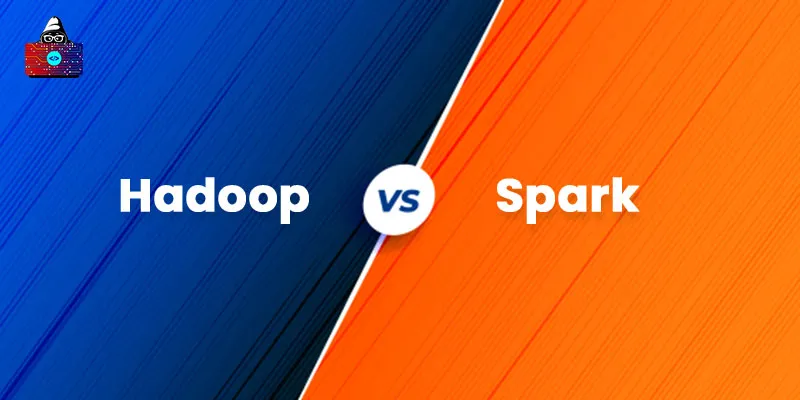Today, a myriad of big data frameworks are available, and therefore, it is pretty confusing to pick the right one. The two most popular and widely used big data processing tools are Apache Spark and Hadoop MapReduce, and both these tools are open-source projects of the Apache Software Foundation.
Choosing anyone out of these two would be very difficult, as they collectively form a robust tool for processing large volumes of data. The primary difference between Hadoop MapReduce and Apache Spark is the approach to data processing. Apache Spark accomplishes the processing of data in memory, whereas Hadoop MapReduce does it by reading the data from and writing it to the disk.
In this article, we shall concentrate on the significant differences between Hadoop MapReduce and Apache Spark.
Hadoop MapReduce vs Apache Spark: A Head-to-Head Comparison
The below-given table highlights the differences between Apache Spark and Hadoop MapReduce:
| Parameters | Hadoop MapReduce | Apache Spark |
| Core Definition | MapReduce is a software framework and programming model that processes multiple terabytes of data sets simultaneously on large clusters of commodity hardware. | Apache Spark is a comprehensive data analytics engine for executing data engineering, machine learning, and data science on single-node clusters. |
| Phases or components |
Hadoop MapReduce divides data processing into four different phases:
|
The primary components of Apache Spark are:
|
| Processing Speed | The processing speed of MapReduce is relatively slower than Spark. | Apache Spark can process data 10 to 100 times faster than Hadoop MapReduce. |
| Data Processing | MapReduce can only perform batch processing for large volumes of data sets. For extended data processing, it requires other engines, like Giraph, Storm, Impala, etc. | As Spark is a comprehensive data analytics engine, it can perform real-time processing, batch processing, graph processing, iterative processing, machine learning, and streaming in the same cluster. |
| Memory Usage | It does not support caching of data. | Spark supports data caching and hence, improves the performance of the system. |
| Coding | Hadoop MapReduce provides low-level APIs. Therefore, it requires developers to code every operation to be performed during data processing. | Apache Spark offers rich APIs in Scala, R, Python, and Java. |
| Latency It is defined as the time the CPU waits for a response when it requests the RAM. | It provides a high-latency computing framework. | It offers a low-latency computing framework. |
| Fault tolerance | MapReduce relies on hard drives instead of RAM for processing data. Therefore, if a system crashes in the middle of the execution, MapReduce can resume where it left off. | In case of a system crash, Apache Spark will begin data processing from scratch. |
| Scheduler | Hadoop MapReduce requires an external scheduler, like Oozie, to schedule its data processing tasks. | Apache Spark acts like its own scheduler due to in-memory computation. |
| Security | It uses Kerberos, a network authentication protocol. Therefore, it is relatively more secure than Apache Spark. Also, it supports a traditional file permission model called Access Control Lists (ACLs). | Spark only supports shared secret password authentication. |
| Cost | MapReduce is comparatively cheaper than Spark. | Due to in-memory processing and the RAM requirement, it is expensive. |
| Function | It is a data processing engine. | It is a data analytics engine and, thus, an ideal option for data scientists. |
| Supporting programming languages | It supports C, Python, C++, Groovy, Java, Ruby, and Perl. | It supports Java, Scala, R, and Python. |
| Redundancy | Hadoop MapReduce has built-in redundancy in it, and shards of data are distributed asynchronously across the system. | Each data record is processed exactly once in Apache Spark and hence, eliminates duplication. |
| Hardware requirement | MapReduce uses commodity hardware to process data. | Spark requires mid to high-level hardware configurations to carry out data processing efficiently. |
Conclusion
Hadoop MapReduce is an ideal option for the linear processing of large data sets. On the other hand, Apache Spark is a perfect choice for iterative processing, graph processing, machine learning, etc. There is no denying that Apache Spark is a better data processing engine than Hadoop MapReduce. But the choice of data processing tool entirely depends on business needs.
People are also reading:





Leave a Comment on this Post